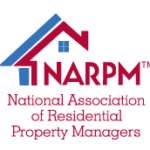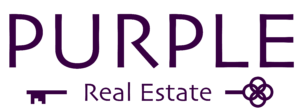Build a massive portfolio of properties, with equity instead of cash
Video Transcript:
Welcome to the Grow Real Estate Investing Podcast. I’m Joe White
And today’s podcast I am going to be talking about how many investors continue to build very large rental property portfolios without having to continue using their savings.
They keep buying property after property using the same original amount of money, without having to continue to save anymore,
And with each property they get cashflow. That means they create income.
We are Talking About Forced Property Appreciation.
We are taking a property and we are making worth more than it costs us.
We make the property worth more than it costs us to acquire it and more than it costs us to improve it, such as renovations.
If we do that, we can take that surplus value, called equity, and buy another property, than another, than another.
And we can do it using nothing more than that very same equity. You are using it over and over again.
Some of you are somewhat familiar with the concept; but those that aren’t might be feeling this all sounds a little infomercial-like.
But this strategy isn’t new. It is a well exercised, well written about real estate investing technique that has been used countless times by rental property investors.
I call it Forced Appreciation, some investors call it Value Add; but it is also commonly called the BRRRR Method.
If you want find more information about this you should search using BRRRR. That is B-R-R-R-R.
That is an acronym created by Brandon Turner from Biggerpockets.
It stands for Buy, Renovate, Rent, Refinance and Repeat.
I think BRRRR is the perfect name for this.
It explains it well and breaks it down nicely.
If you haven’t discovered Biggerpockets.com yet, seek it out, it's a great resource without comparison.
It's a free community for all things involving real estate investing, not just this method, though it's a favorite of many of us rental property owners.
They do have some paid features; but there is endless value in what they offer for no cost. And it's a great resource for the BRRRR technique.
In fact, David Green, a host on BP published a book on BRRRR through Biggerpockets.
The concept is simple.
You are going to buy a property that you know you can improve in some way that will increase its value.
You might buy a distressed property that needs a renovation. The owner might need to sell it to you at a discount because it is in such poor condition.
One reason the seller might sell it to you at a discount is that lenders often won’t loan a buyer money against a distressed property that they feel might be a risky investment.
When a lender loans money on real estate, they typically use the property as collateral.
A property with a bad roof, for example, wouldn't be a safe, secure investment for them; because that bad roof could cave-in and ruin the asset that is protecting their investment.
If you are involved in real estate, it's important to know that 83% of all loans are FHA Loans - where a buyer can buy a house with just a 3.5% down payment.
This type of loan is a government secured loan designated for someone to buy their live space, not typically for a secondary property buyer like a rental property investor.
Generally speaking, you can not get an FHA loan on a distressed property. In fact, even broken kitchen or bathroom tile, any sign of lead paint, a broken step, or railing will be prohibited.
So if a property isn’t in good enough condition for a buyer to get an FHA loan, which is a lot of properties, the seller loses 83% of their potential buyers.
Conventional loans, where a buyer puts 20% or more down, have far fewer restrictions; but banks still often won’t loan if they feel the property is in poor condition.
And even if a home is in loanable condition, most lenders have minimum amounts they will loan against. A $40,000 home generally isn’t worth it to them and few lenders will loan for it.
So sellers, with unloanable properties can only sell to the few buyers out there who have cash-like ability.
Someone who has cash, a Line of Credit, like a Heloc, or has Private Lending, maybe a short term lender like hard money.
At this point the end buyer is very likely to be an investor and by definition, investors require a discount.
I have podcasts on how to get property at a discount, so let's assume you found a property...
And Let’s See Forcing Appreciation In Practice:
- Purchase a Discounted Property:
This is a key place for you to create Equity - by buying a property for less than it's worth, you immediately have equity and you are on your way.
For many investors this usually means that you found a property where your All-In Cost will be no more than 70-75% of its After Repair Value. The After Repair Value, or “the AVR”, is what the property will be worth after you are finished improving it.
Your All-In Costs means exactly that - All-In. So this means:-
- Your Costs of Acquisition: The purchase price, the transfer tax, the title insurance, any commision you might pay.
- Your Holding Costs Until Its Producing Income with a Tenant: This would be property tax, utilities, insurance.
- Improvement Costs: This is typically your cost to renovate it.
- Any interest you might have on your debt - maybe you leveraged borrowed money to do this deal.
- Renovate It:
Here you will likely be creating most of your equity.
Hopefully you already created equity by buying for less than the property is worth and now you will be leveraging strategic property improvements to create even more.
For example, you might pay to have the property painted and that cost might be $1,200; but its effect on the property value might be as much as $25-30,0000.00.
For $1,200 you got a $25,000 return.
You forced the property to appreciate and made a large profit in doing so.
I had a property this year, with bricks falling out of the front of it.
How much less would a buyer pay for a house with the bricks falling out, about to fall on their head if they don’t open the front door slowly?
$20,000 less? $30,000 less?
This problem was that this house needed new stone headers above the doors and the windows.
I knew this was a $1,500 problem that fixing it likely made me $25,000, plus the new stone headers improved the overall look of the property.
These improvements can be anything. It can be evicting a bad tenant. Fixing a zoning issue. - Rent It:
Now we are going to start making an income on our property. We call it cashflow. Your wealth and true income will eventually come from equity, and the equity also is what creates cash flow; but cash flow is what keeps us safe. It's your guarantee you can pay your bills on this property and it creates tax-free, spendable profit. Also, a lender is likely going to want to know the property supports itself, and even produces a profit. - Refinance It:
At this point we have a rental property that is worth at least 25% more than we put into it - the money we needed to buy it and to renovate it.
So if we bought a house for $50,000 and we put $25,000 to improve it.
We have $75,000 of our money into it.
It's okay if it's not your money.
Maybe you used private lending, hard money or seller financing or another method that I’ve talked about on a different podcast - it doesn’t matter.
The amount you are in is still $75,000.
And now it's worth $100,000 and we would like to take back that $75,000 that we put into this property so we contact a back to do a Cash Out Refi.
Most lenders require a seasoning period of typically 6 months before they will refinance a property.
They require you to own it for 6 months; before they are willing to loan against it.
Also, most lenders will not loan the full amount that the property is worth.
Some will loan 70%, some will loan up to 90%. This is called Loan To Value, or LTV.
So if the property is worth $100,000 and the LTV is 75%, the bank will loan upto $75,000 on it.
The most typical LTV is 75%.
I personally will not borrow over 75% of the property’s value as leaving 25% equity in the property keeps a safety buffer.
In the case of a problem, the property value would need to drop almost 25% before I have a real problem, so I like having that failsafe built in to my investing. - Repeat:
Now, that our property is producing us a spendable cash flow, we want even more cash flow, so we are going to do it over again. So we are going to take our $75,000 Cash Out Refi money the bank gave us and we are going to payback any money we borrowed, so we can borrow it again, especially now that we have proven ourselves, or we are going to take our cash and do the process again, with a new property that will also cash flow.
-
The concept is that you are making your initial investment work all on its own. Each rental property will be working to create you cash flow and will also work to build your portfolio; and doing it with no more than the amount you initially invested or borrowed.
Of course you can add savings, or the cash flow to greatly increase the returns or to expedite the speed. The point here is that your investment capital should be maximizing its returns; it's not that you should stop adding to it.
And some properties will do better than others. Some properties will be home runs and will be worth far more than the 25% you were shooting for, allowing you to take out far more than you put in.
Some might fall short of your estimates. Its after repair value might be less than you thought, or the renovation costs might be more than you estimated, and you will need to leave money in the deal. Leaving money in the deal might delay your progress; but far exceeds a savings account, and between the tenants paying off your debt, and the property appreciating yearly, you will get back that money soon enough.
So here is how you can build a massive rental property portfolio, without much money at all.
Happy investing everyone!






